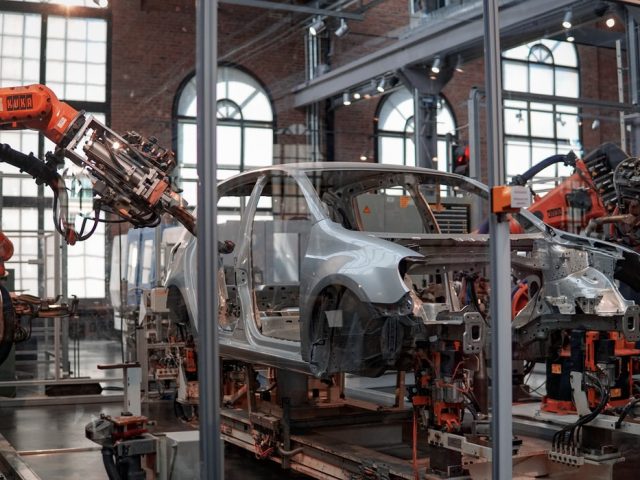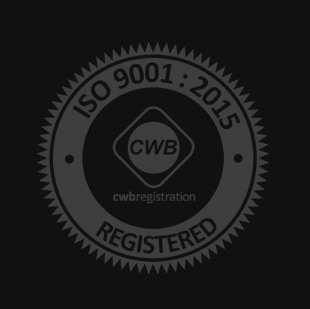Aluminum sheet metal fabrication is a manufacturing process used to manipulate or shape a piece of aluminum sheet metal stock to create the desired component, part, or end product. Like any metal used in fabrication, the manufacturing process may include material removal and-or material deformation. Whichever process or metal is employed, sheet metal fabrication is essential to nearly every conceivable industrial sector in the manufacturing products. Look around—cars, cans, computers, appliances, airplanes, various tools—derive from some method of sheet metal fabrication.
Whether aluminum, steel, titanium, stainless steel—no matter the raw stock sheet—metal can be cut, bent, or stretched into nearly any shape and then joined to create a product. Removal or deformation processes can vary from bending a sheet to form complex contours or simply cutting material into any 2D geometric shape.
The Sheet Metal Fabrication Process
Cutting Metal Stock
Cutting, on the other hand, removes material from metal stock. Depending on the fabrication design, cuts can either be shear or non-shear. Shear cutting is less precise and is principally used in nonindustrial applications. A basic “shear” cut-through material is a similar action as scissors—it cuts straight lines on the flat metal stock using an upper blade and a lower stationary blade. Another type of shear cutting is punching, or blanking, where a machine punches designs out of a sheet of metal and discards the remaining material.
Non-shear cutting is a precision process employed in industrial applications. Cutting without shear can be performed through laser cutting with a focused beam of light, plasma cutting through heated compressed gases, waterjet cutting through concentrated streams of water-filled abrasives, and machining with drill bits and lathe blades.
Forming Sheet Metal
Sheet metal fabrication processes then involve deforming or removing material to manufacture a product. Fabrication processes are performed through forming, cutting, and joining. Forming sheet metal is a process that reshapes it without cutting material away from it. Forming metal may include stamping, bending, stretching, extruding, or roll forming the material into another shape.
Welding, Brazing, & More
Joining fabrication processes involve the more standard methods of welding, brazing, riveting, and adhesive applications. Welding and brazing are somewhat similar, in that they both include melting material. Welding processes fuse metal sheets by melting them together, whereas brazing joins metals together by melting a filler between the material.
Riveting and Adhesives
These methods of joining do not require melting material together. Riveting, attaches sheets of metal with small metal pins or bolts through mechanical means. Adhesives attach metal sheets with a bonding agent that can either act alone or reinforce another joining method like riveting.
Metal Finishing
Once the metal has been fabricated it goes through a series of finishing processes that will further enhance its properties. Finishing fabricated parts, components, or end products may involve such processes as sandblasting, deburring, annealing, and-or coating.
As a metal for processing, aluminum sheet metal fabrication methods are not dissimilar to other metals. Aluminum is known for its many unique, favorable properties, making it ideal for fabricating many products. It is lightweight yet strong, resilient, and durable yet soft, and easily malleable. It’s highly conductive yet non-magnetic, corrosion-resistant, however, is non-toxic, does not spark, and is non-combustible. It is also typically less expensive than stainless steel, another common metal used in fabrication.
Which Industries are Aluminum Used?
Because of these properties, aluminum is used in the fabrication of components and parts throughout many industrial sectors in manufacturing a wide range of products. The aerospace industry relies on aluminum’s weight-to-strength ratio and corrosion resistance in the manufacture of wings, fuselages, seats, and many other parts. Food and non-food products rely on aluminum for packaging, containers, and even foils. The automotive applications for aluminum are extensive and numerous. Fabricated aluminum parts are used for the vehicle frame and body, the electrical wiring, the wheels, headlamps, transmission, air conditioner condenser and pipes, engine parts such as the pistons, radiator, and cylinder head.
In the construction industry, aluminum is used for architectural decoration and structural material due to its finish and energy efficiency and sustainability. Heating, ventilating, and air conditioning (HVAC) ducts found in homes and buildings are typically made of aluminum. No durable goods are manufactured without aluminum fabrication—refrigerators, washing machines, dryers, dishwashers, and so on. All electrical and electronic applications, consumer or commercial, from power grids using electrical wiring and conductors to laptops and coffee makers use aluminum in fabricating parts and components.
Aluminum’s lightweight and strength make it an ideal metal used in manufacturing. Aluminum fabricated parts can range from small screws or washers to household appliances to the wings of aircraft. It is why, in general, aluminum sheet metal fabrication is one of the more common methods in manufacturing parts and components for industrial, commercial, and consumer products and applications.



